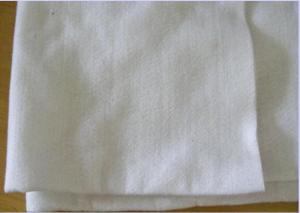For any person engaged in civil engineering or landscape architecture projects, geotextile fabric roll sizes are vital. These rolls of fabric come in different dimensions that serve a specific purpose and have their own advantages. This article discusses the importance of geotextile fabric roll sizes, factors influencing their selection and types available in the market.
The Role of Geotextile Fabric in Construction
Geotextile fabric is used for a variety of construction purposes (100). It is manufactured from synthetic polymers like polyester, polypropylene or polyethylene to provide high strength and resistance to various environmental conditions (19). They are useful for soil reinforcement, erosion control, and water filtration among other uses. The knowledge about different rolls’ sizes is an important aspect when buying one for your project.
Factors Influencing the Selection of Geotextile Fabric Roll Sizes
Several considerations arise when selecting geotextile fabric roll sizes (87). Such factors include size of the project, particular application as well as desired performance characteristics (39). For instance there is need for larger rolls where a large project which requires high coverages and efficiency is being done. Alternatively smaller rolls may be more suitable for smaller projects or those sites needing precise placement.
Types of Geotextile Fabric Roll Sizes
In the market there are several geotextile fabric roll sizes available to meet different needs (81). Commonly this ranges from small rolls measuring 2 meters by 50 meters up to bigger ones going up to measurements at 6 meters wide by 100 meters long (26). Depending on its width and length it can completely change how easy it will be installed compared with how much cost will go into it overall.
Personal Experience with Geotextile Fabric Roll Sizes
From my own personal experience I have found that choosing geotextile fabric rolls can be a delightful process full of learning and discovery (134). Each project is unique, and finding the perfect match in roll sizes is like solving a puzzle. It’s not just about metrics, it also involves checking whether the fabric matches with the project design and objectives.
The Emotional Connection to Geotextile Fabric
As an engineer, I have really come to appreciate how much geotextiles mean for our built environment (73). More than just being a material, it is that component which makes structures stable over time. There is nothing more fulfilling than seeing your project take shape with fabric that does its job perfectly.
The Importance of Customization in Geotextile Fabric Roll Sizes
In some cases, standard roll sizes may fail to meet a projects’ particular requirements (69). This calls for customization. A majority of manufacturers offer custom sized rolls to fit special project needs. It feels great having such personalization because one knows that exactly what they wanted has been produced from the fabric.
The Future of Geotextile Fabric Roll Sizes
Advancement in technology brings about changes in the manufacturing processes that produce geotextile fabrics as well (76). With time new materials and production techniques will be introduced that are going to further hone sizes and capabilities of geotextile fabrics (34). This transformation is exciting as it portends greater flexibility and performance in coming constructions projects.
Conclusion
Consequently, the sizes of rolls of geotextile fabric are important in construction projects. They offer a wide range of choices for diverse project requirements and preferences. In case of construction projects, whether it is a large infrastructure program or small-scale landscape design, this could be the key determinant. This process is not only about choosing technicalities but also an opportunity to share with materiality as well as recognize what role it has in making better built environment. Geotextile fabric roll sizes are more than mere measurements; they form the basis for successful undertakings and symbolize the creativity behind recent engineering trends.







